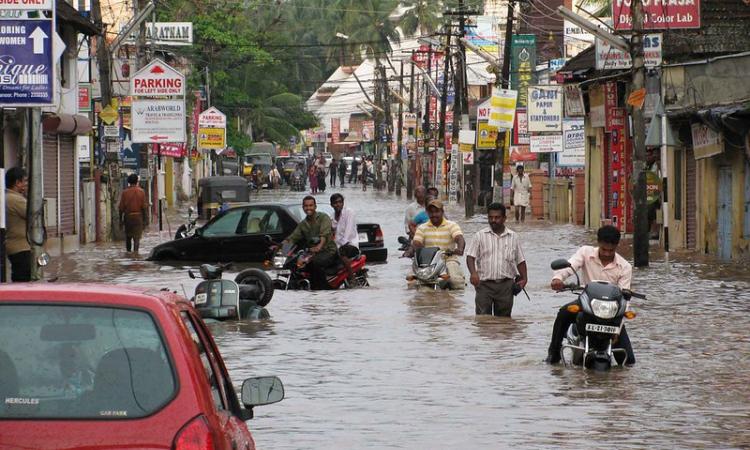
Climate change will harm India's economy: IPCC
In the second part of its sixth assessment report, the United Nations Intergovernmental Panel on Climate Change (IPCC) concluded that global warming of 1.5°C would cause unavoidable multiple climate hazards over the next two decades. Furthermore, the report mentioned that India would face extreme climate scenarios on many fronts - from rising sea levels to groundwater scarcity, from extreme weather patterns to a decline in crop production, besides a rise in health risks. The report also projected an increase in river 'runoff' in the Indus, Ganga, and Brahmaputra river basins, which contribute water to the densely populated areas of south Asia, between 2050 and 2100.
Nonetheless, the report, which for the first time focuses on solutions, has called for Climate Resilient Development that combines climate adaptations with greenhouse gas reductions. (Business Standard, Down to Earth, Mongabay India)
UNEP’s new report warns of frequent and intense wildfires owing to climate change
The United Nations Environment Programme (UNEP) and GRID-Arendal recently released a report predicting that climate change and land-use will increase the frequency and intensity of wildfires. According to the report, the number of global fires may rise by up to 14 percent by 2030, 30 percent by the end of 2050, and 50 percent by the end of the century. The report indicates that wildfires and climate change are mutually exacerbating and will disproportionately affect the poorest nations of the world.
Furthermore, it calls for a radical change in government spending on wildfires, shifting from reaction and response to prevention and preparedness. The report also recommends an adaptive land and fire management approach, and concludes with a call for stronger international standards for firefighters' safety and health. (Firstpost)
Goa’s biodiversity action plan to document traditional conservation practices and vulnerable ecosystems
Goa will frame its state biodiversity strategy and action plan on the lines of the national biodiversity conservation plan for which a 45-member committee has been formed.
In addition to dedicating a separate chapter to the saline khazan fields ecosystems of Goa, the panel has also proposed documenting traditional conservation practices. The new plan, which aims to provide a framework for conservation, will act as a handbook for citizens to understand how they can contribute to conservation.
Along with chapters about coastal, marine, and vulnerable ecosystems, committee members suggest forming a green skills committee that will discuss topics such as building bundhs in a sustainable manner and making water bodies more breathable. (The Times of India)
Covid lockdown, pollution-induced curbs, and delay in nod set back the Yamuna Action Plan Phase 3
Delhi Jal Board has reported that the Yamuna Action Plan Phase III has been a set back by up to two years due to delays in permissions from agencies, the lockdown, and a temporary ban on construction activities due to high levels of pollution. The DJB is the project executing agency for Yamuna Action Plan Phase III, which aims to reduce pollution levels in the river by treating domestic wastewater. Centre received funding from the Japan International Cooperation Agency (JICA) in 2011 for expanding its sewage treatment capabilities by renovating, repairing, and replacing the existing sewerage system.
As per the DJB report detailing progress till January 2022, the project was delayed due to a delay in obtaining tree-cutting permission, approval from road-owning agencies, traffic permissions, EPCA ban, and slow progress during the monsoon season. (The Print)
Haryana plans to construct small dams to conserve groundwater
Haryana authorities plan to construct small dams in the Aravalli and Shivalik hills to conserve water flowing through the region's springs. The water conserved will assist in combating groundwater depletion in the region and will be used for irrigation and drinking.
The authorities intend to build six small dams in Morni area of Shivalik Hills, where a few dams were previously constructed. The region was selected for this project due to the low water levels and saline conditions in the area. For this purpose, the government has introduced the Ranney Well Scheme, worth Rs 263 crore. Furthermore, the government has launched the Mera Pani-Meri Virasat Scheme, under which farmers are being given Rs 7,000 per acre for sowing alternate crops in place of paddy to save water for irrigation. (The Hindu)
This is a roundup of important news published from February 16 – March 2, 2022. Also read policy matters this fortnight.
/articles/ipcc-releases-second-part-sixth-assessment-report-calls-climate-resilient-development